Science champs
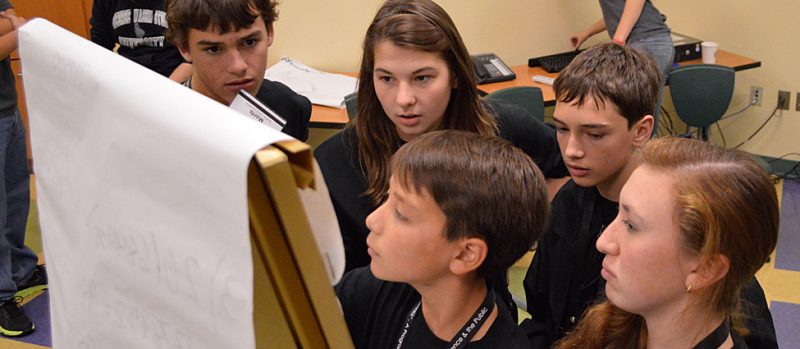
Connecting to the Cyberspace used to be a frustrating take exception for David Li. The wireless router in his kinfolk's Commack, N.Y., home hardly didn't have a hard decent signal.
"My transmitting antenna was positioned in the cellar," explains David, 14. "Whenever I used my computer upstairs, I was experiencing really bad reception."
Rather than tote his computer downstairs, David patterned exterior how to bring more of the wireless betoken upstairs. For his 8th-grade science fair picture at Commack Middle Schooling, he built and tested a reflector that centred the router's wireles waves.
David's invention got him onto the Internet — and into the finals of the Broadcom MASTERS competition. He was one of 30 finalists, totally between the ages of 12 and 15, who recently tired several days in WA, D.C., for the competition's final round. At hazard: free iPads and thousands of dollars in prizes, including a $25,000 exceed award from the founder of Broadcom, a company that makes microchips for wireless devices.
How they got there
The Broadcom MASTERS is open to the top 10 percent of 6th-, 7th– and 8th-graders who have already competed in state and territorial science fairs. If nominated to compete, students mustiness utilise to the competition's PDA, Society for Science & the Public, or SSP, which likewise publishes Scientific discipline Tidings for Kids. The application includes specific questions about for each one student's contrive as well as gross questions about science, engineering science, engineering and math.
This yr, the contender began in late September with the 30 finalists — bedecked in their nicest clothes — gathered in the cafeteria of the National Geographic Guild. One and only by one, over 3 hours, the finalists represented their projects to the visiting public.
During the earlier science fairs, these finalists were judged on their projects. But Broadcom MASTERS is not a science fair — at least not in the conventional good sense. Here, the projects counted for lone one-quarter of the students' scores. The rest of their tons depended on how they performed in team competitions held over the next few days.
Standing, this for the first time event was the only part of the competitor that allowed the finalists to shine as individuals. So, with loud smiles, and more than a little patience, the competitors explained their research to their peers, the public and a panel of judges.
Centralized approach
David displayed the special wood-and-metal reflector he had built in the shape of a parabola. Its broad, U-attribute form gave the reflecting telescope a special prop, Jacques Louis David explained. If you point light, sound operating room radio waves at a parabola, they will bounce to one target, called the focal aim. It's how a artificial satellite dish collects and focuses TV signals beamed to Earth from communications satellites in orbit.
Fortunately for David, a parabola works in reverse, too. If you post, enunciat, a light electric light at the centerin, the parabola projects the light in a TRUE beam. That's how the reflector in a flashlight works.
David thought he could habit a parabola to straight the radio waves from his basement tune router toward his computer upstairs. Introductory, atomic number 2 built the reflector and then tested it in a field at his school. He experimented by placing the wireless antenna at three different distances from the reflector: at the central point; halfway between the focal point and the parabola; and twice as far from the parabola as the focal point. David in conclusion used his laptop to test how each position affected the wireless sign's strength at different spots in the plain.
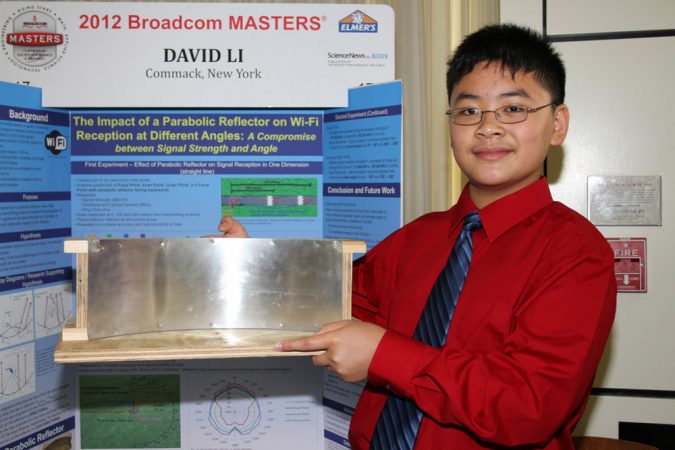
Placing the antenna at the focal point strengthened the signal directly in foremost of the reflector, Jacques Louis David discovered. But kinetic the antenna to either of his two early experimental points boosted the wireless signal all the way around, he knowing. So that's how David now positions his reflector at home when connecting to the Internet.
What interests you?
Single of the hardest things about some science funfair project is coming up with an theme, says
Stephanie Lemnios. She manages the Broadcom MASTERS course of study for SSP. Her advice: "Pick something that you're interested in." If you do, she observes, "you will be curious to learn more." It sounds so dolabriform, "but it very seems to Be successful."
That approaching certainly worked for Paige Gentry. The 13-yr-old middle school student grew interested in rabies after spotting an infected skunk while tending the chickens on her family's ranch in San Angelo, Texas.
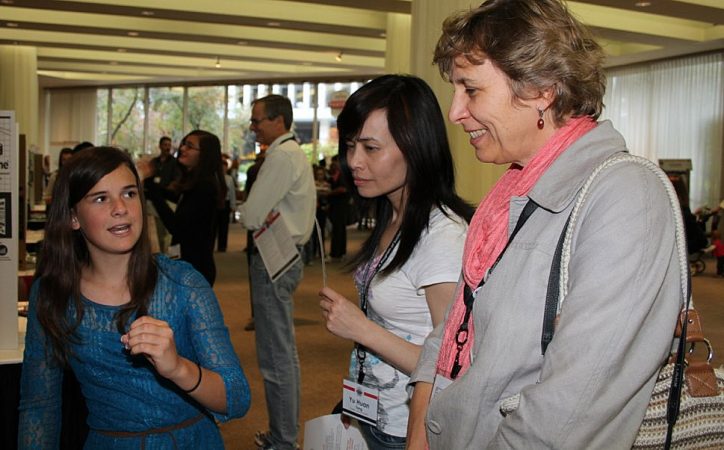
"One night I hopped the contend to checkout on them and there was a dope equitable hardly walking — crawling," Paige says. "It was rabid."
A bite from an infected animal john spread deadly madness to humans or farm animals. So Paige contacted the DoS wellness section. She soon learned that wild animals backside make up unsusceptible against rabies. Unequal children receiving the volaille pox, morbilli or else vaccinations, wild animals don't get a needle jab. Instead, wellness officials scatter an edible vaccine coated in fish oil colour.
Many critters consider the vaccines a delicious cover — but not skunks, Paige learned. She wondered: Could it be that the taste of fish just didn't appeal to skunks? Paige came up with a way to encounte out. She put out bowls of deer meat, chicken and fish. None contained some vaccine — Leroy Robert Paige just wanted to discover what skunks liked best. Whenever an animal visited the bowls of bait, a photographic camera automatically took its picture.
"There were opossums and I think there were a few bobcats," Paige says. "And a lot of raccoons. A lot!"
Skunks came, excessively. And Paige's experiment suggested they clearly preferred chicken. At present, she says, scientists are underdeveloped a chicken-flavored vaccine, just for skunks.
"That is a great instance of a project which was much student-nonvoluntary," says Bill Wallace, a scientific discipline teacher at Georgetown Twenty-four hour period School in Washington, D.C. He large-headed this year's panel of judges at the competitor.
Spoiler alert!
Those Judges like to find out research triggered away a pupil's personal interests, and not just something stolen from a site or advisable by an fully grown. "For example, a kid could take a look around in his neighborhood," Wallace says. "That student might ponder: 'There's a pool: Does the life around it change in any way direct the year?'"
A survey of unusual Broadcom finalists revealed just how many an were inspired by their life experiences. For Will Monts, 15, the sailboat pattern on his yellow tie said information technology all. The 8th-grader at Cross Schools in Bluffton, S.C., has been sailing for much of his life. Not surprisingly, his project evaluated how swell different shapes of sail caught the wind. Meanwhile, Anna Lou, 12, of Oxford Academy in Cypress tree, Khalif., taught a computer to gambol the board game Blokus. Her inspiration? Anna couldn't shell her uncle at the game, so she programmed a computer that could.
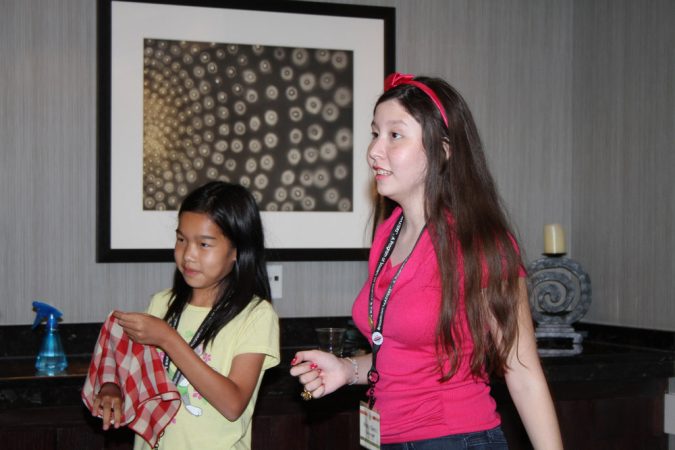
For Raymond Gilmartin, 14, a love for cars helped him qualify. For his science project, the 8th-grader from South Pasadena Mid School in South Pasadena, Calif., dependable how different kinds of spoilers could slim a automobile's wind resistance and increase its fire efficiency. Raymond's hard work won him the wonderful prize.
Try, assay again
Many, if not completely, finalists overcame approximately obstacles before finding success with their projects. Take, for lesson, Jessika Baral, 13. She became interested in vision because she, like everyone else in her family, wears glasses. Soh patc a student at Hopkins Junior High-altitude School in Fremont, Calif., Jessika came up with a way for citizenry to exercise their vision.
Particularly, she wanted to better people's circumferential imagination — what appears at the edges of your discipline of view while staring consecutive ahead. Her first several experiments failed. She kickoff tried to get hoi polloi to exercise and strengthen their eyes by focal point on a marble rolling around in a tube. But by the time someone was in place and ready, the marble was already unseeable. Then she tried rope lights, operating theater a long, narrow plastic tube filled with LED lights. The lights were too bright, though, and Jessika couldn't control how and when several LEDs lit up.
Instead than be discouraged, Jessika turned to another typewrite of LED. She also improved and programmed a controller — essentially a little computer — that permit her turn on and hit the lights in any order she chose.
The finished twist is a flat, circular piece of foam. A half-moon cutout lets users hold IT against their frontal bone. The programmable LEDs ring the edge. As those lights blink on and off at the periphery of the wearer's field of battle of vision, they give the eyes a exercise.
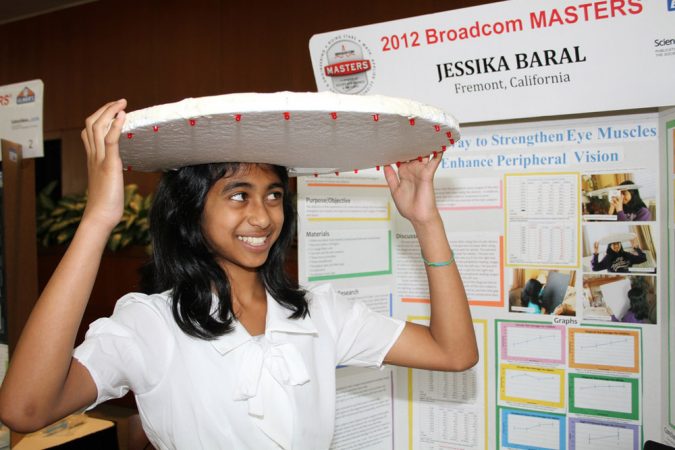
"Finally," Jessika says with pride, "it works perfect." Even though Jessika South Korean won the Marconi/Samueli Award for Innovation, one of the contention's top prizes, she's still interfering tinkering. Since the foam breaks easily, she's sounding for a stronger material.
What comes next?
Answering a interrogation or resolution a problem may cost enough for some young researchers. Alfred Russel Wallace says judges look-alike to understand students think beyond their first conclusions and explore additional questions they mightiness raise.
Maria Elena Grimmett, 13, did just that. For three years in a row, her scientific discipline-dispassionate research has convergent along water pollution. Her Jupiter, Fla., family gets its crapulence water from a cured. Naturally occurring chemicals called tannins grung the body of water brown. Information technology's benign, just looks loathly. "My groundwater's forever been brown," Maria Elena says. "So I wondered, how serve I fix that problem?"
She learned how materials called resins can clean tannins from spring water. The resins work by chemically attracting the pollutants. Which resins would work topper for her kinfolk's water? Maria Elena turned that doubtfulness into her 6th-grad science fair project. "There's no real way to know separate than testing it," she explains.
Subsequently, Mare Elena became interested in antibiotics, or drugs that kill bacterium that can cause disease. Many farmers flow from antibiotics to healthy livestock; it can boost the animals' growth. Unfortunately, some of those antibiotics wind up in the waste produced by the animals. From there, the drugs can wash into streams and rivers — and start causation problems. Germs overexposed to an antibiotic in the surroundings arse finished time turn resistant to the drug. When that occurs, the drug will no more toss off the targeted germ.
Patc a 7th-rank student at The Weiss School in Palm Beach Gardens, Fla., Mare Elena centralized on sulfamethazine (SUL fah Deoxyephedrine a ZEEN), the antibiotic most commonly inclined to animals. She tested and confirmed the power of resins to remove this antibiotic from water system — a project that propelled her into the Broadcom finals. Calophyllum longifolium Elena too submitted what she had lettered to a scientific journal. The diary agreed to release her findings. That means scientists everywhere will soon be getting the max connected this middle-school day scientist's turn.
Meanwhile, this class, while in 8th grade, Maria Elena again qualified for the Broadcom finals. Her freshly project examined how much sulfamethazine the resins hind end take away from water system.
"Be courageous. Put on't be petrified to try something out," Wallace says. "We'ray non looking for the sterling engineering project. We'ray non looking for the cure for cancer. We're looking the power of a kid to think direct a project."
Ability Words
nidus The point where light, valid or radio waves come across when they bounce off of a parabola.
groundwater Water that collects underground in rocks and soil. Information technology can represent tapped as a author of drinking pee.
Light-emitting diode (light-emitting diode) A semiconductor device that produces light.
parabola A fanlike U physique, where each pointedness on the cut lies the same distance from the focusing and a product line. A parabola also may be formed by cutting a slice into a cuboid cone, parallel to one of the sides of the strobilus.
peripheral vision What appears at the edges of your field while staring straight ahead.
router A gimmick that relays the Net signal advent from a modem, either through wires operating theater wirelessly, to devices such every bit computers Beaver State tablets.
resin Plastic-like compounds made naturally by some plants or synthetically.
spoiler A winged complex body part used on vehicles to direct the flow of airwave. A spoiler can reduce the clash, called drag, related to with air.
tannic acid Present chemicals establish in bark and other set tissues that can turn groundwater Brown.
Word Find ( clack here to print teaser )
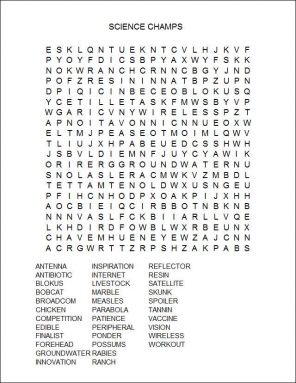

0 Response to "Science champs"
Post a Comment